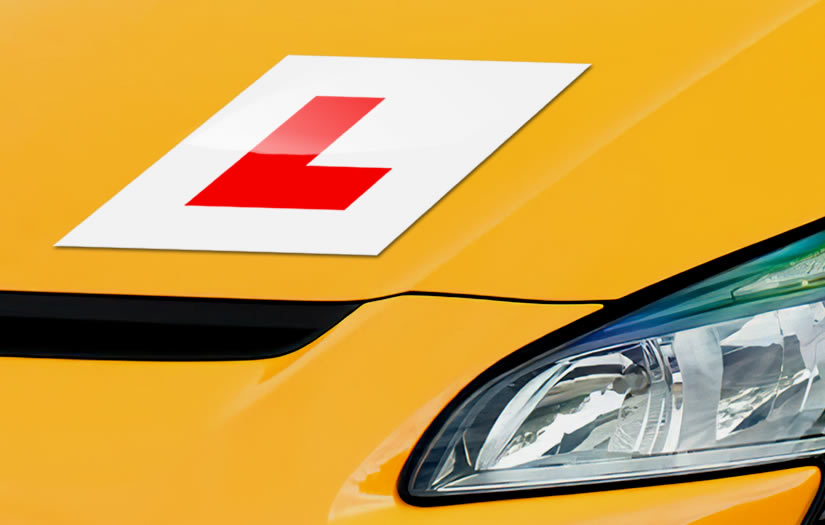If you’ve been learning to drive in your own automatic car, then it’s usually a good idea to take the driving test in the same car that you’ve been learning to drive in. Before attending your driving test, you’ll need to ensure that your car complies with legal obligations required for driving on public highways and certain other criteria set out by the DVSA.
If your car fails to meet the legal obligations required to drive on public highways, the examiner will cancel your test. In these circumstances, the DVSA does not reimburse your test fee.
Vehicle Legal Obligations for the Driving Test
For the driving test, your vehicle must:
- Be taxed.
- Be insured for the driving test. This may require specific insurance. If you’re not sure, check with your insurance company.
- Have a current MOT. This only applies to cars that are over 3 years old.
- Have no dashboard warning lights showing. Warning lights are either red or amber in colour and illuminate often when there’s a fault.
- Have a legal tyre tread depth of at least 1.6 mm around the entire circumference of all four tyres and across the centre ¾ breadth of the tyres.
- Not have a space-saver tyre fitted.
- Have 4 wheels.
- Have a MAM of no more than 3,500 kg. MAM, or ‘maximum authorised mass’ is the limit on how much the car can weigh when it’s loaded. Details of this will be in the car owner’s manual.
- Be in a roadworthy condition, for example vehicle bodywork in a safe condition, no cracks in the windscreen that may affect observation, working rear-view mirrors etc.
DVSA Vehicle Criteria
For cars taken on the practical driving test, the DVSA have their own criteria which includes:
- A smoke-free environment. This means that the car must not smell of smoke when the examiner enters the vehicle.
- A car that’s capable of reaching at least 62mph and have a speedometer that displays the vehicle’s speed in mph.
- An extra interior rear-view mirror for the examiner.
- L-plates (‘L’ or ‘D’ plates in Wales) attached to the front and rear of the vehicle.
- A passenger seatbelt for the examiner and a proper passenger head restraint (not a slip-on type).
Do Examiners Check Your Car on a Driving Test?
Yes, after carrying out the eyesight test and before getting into your car, the examiner will check:
- The legality and general condition of all 4 road tyres.
- The general road condition of the vehicle, including windscreen.
- The vehicle’s mirrors.
- That there’s an L-plate fitted to the front and rear of the vehicle.
- The passenger seatbelt.
- The passenger seat has a proper head restraint.
- That there are no warning lights that remain lit after the engine has started.
Type of Automatic Cars that can be used on the Driving Test
An automatic or semi-automatic car is defined by the absence of a manual clutch foot pedal. An automatic or semi-automatic car will have 2 foot pedals; a brake and accelerator pedal. A semi-automatic car allows the driver to change gear either by operating the gear selector lever, or by using gear paddle shifters located on the steering column.
If you take the driving test in either an automatic or semi-automatic car, you’ll only be able to drive automatic and semi-automatic cars once you’ve passed your test. If you wish to drive a car with a manual transmission, you’ll need to retake the driving test in a manual car.
Hiring an Automatic Car for the Driving Test
The DVSA allow hire cars on the driving test, but if you do intend on hiring an automatic car for the driving test, you must ensure it’s fitted with dual controls and meets all other legal obligations and DVSA criteria.
Either your own car or the hire car can be equipped with:
- Dashcams and other cameras, provided that the camera only faces outside of the car and does not film the inside. Additionally, the camera must not record audio from inside of the vehicle.
- An electronic parking brake.
- Hill-start assist.
Cars that are Not Permitted on the Driving Test
There are certain cars that do not allow the examiner sufficient all-round observation and are therefore deemed unsuitable for the use on the driving test. These include:
- BMW Mini convertible
- Ford KA convertible
- Toyota iQ
- VW Beetle convertible
If you are using a convertible car, panel van or any type of vehicle that you are unsure whether or not it’s permitted. Contact the DVSA:
Email: customerservices@dvsa.gov.uk
Telephone: 0300 200 1122. Telephone lines are open Monday to Friday from 8am to 4pm.
